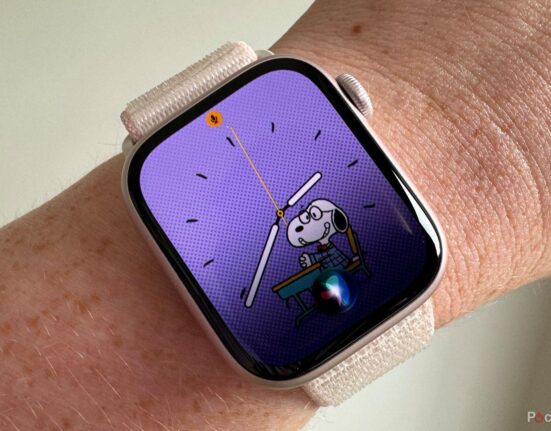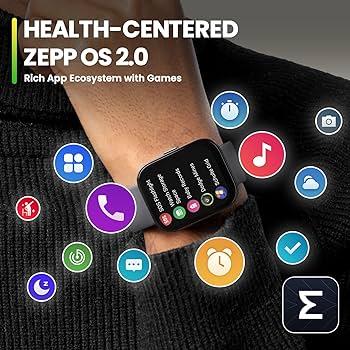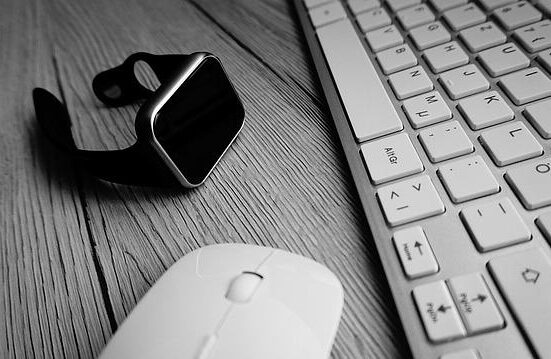In the ever-evolving landscape of wearable technology, smartwatches have carved out a unique niche that blends functionality wiht personal expression. At the forefront of this revolution, two giants stand tall: Apple’s WatchOS and Google’s Wear OS. Each platform boasts its own vibrant app ecosystem, designed to enhance the user experience, promote health and fitness, and seamlessly integrate with our increasingly connected lives. Yet, as consumers navigate this digital realm, thay are faced with a crucial question: which ecosystem truly delivers the most value? In this article, we delve into the nuances of these two smartwatch app ecosystems, comparing their strengths, weaknesses, and unique offerings. Join us as we explore how each platform stacks up, empowering you to make an informed choice in the realm of smartwatches.
Exploring App Diversity: A Deep Dive into Apple Watch and Wear OS Offerings
The app ecosystems of Apple Watch and Wear OS showcase the distinct philosophies of their respective platforms, each featuring a unique array of offerings designed to cater to different user needs. The Apple Watch benefits from a tightly integrated ecosystem, with apps that leverage the robust capabilities of iOS. Developers can create immersive experiences using features like SiriKit, HealthKit, and HomeKit, allowing for seamless transitions between devices and a cohesive user experience.Popular applications include fitness trackers, communication tools, and productivity enhancers that seamlessly integrate into the Apple ecosystem. Some standout apps are:
- Strava – A favorite among athletes for tracking workouts
- Todoist – Ideal for productivity enthusiasts
- Apple Maps – Leveraging GPS for navigation on-the-go
On the other hand, Wear OS apps reflect a broader diversity influenced by Google’s vast ecosystem, allowing for a wider range of third-party integrations. Developers can experiment with different styles and functionalities, promoting an array of creative apps and features. Wear OS supports integration with Google services and facilitates the use of Google Assistant, enhancing voice command capabilities. Users can find diverse applications aimed at various interests, such as:
- Google Keep – For jotting down fast notes on the fly
- Spotify – Streaming music directly from the wrist
- Fitbit – Comprehensive health and fitness tracking experience
While both platforms offer distinct benefits, the choice ultimately depends on user preference, with Apple Watch excelling in a cohesive habitat and Wear OS boasting a broader range of third-party applications.

User Experience Unveiled: Navigating the Interface of Smartwatch Ecosystems
When diving into the world of smartwatch ecosystems, the user experience often stands at the forefront of decision-making for consumers.The Apple Watch ecosystem takes pride in its polished design and intuitive interface. With a strong focus on seamless integration with iOS devices, users are greeted with a cohesive experience that feels familiar and responsive. notifications flow effortlessly from iPhone to watch, and the app layout allows for easy navigation. Key features include:
- Haptic Feedback: Provides tactile notifications that enhance interactivity.
- Customizable Complications: Users can personalize their watch faces with vital data.
- Siri Integration: Voice commands streamline user interaction across tasks.
On the other side, Wear OS presents a flexible and diverse ecosystem, making it a compelling option for Android users. The interface favors an open approach, allowing various hardware manufacturers to bring their spin on the smartwatch experience. Google Assistant plays a central role, enhancing functionality through voice control while apps often come with a more universally accessible layout. Noteworthy attributes of the Wear OS ecosystem include:
- Variety of Styles: A wide array of watch designs enables personal expression.
- Google Fit Integration: Health tracking is well-optimized across devices.
- Customizable Tiles: Users can switch between apps on-the-go for efficiency.

Health and Fitness Features: A Comparative Analysis of Wellness Apps
In the evolving landscape of wellness applications, the Apple Watch and Wear OS present distinct approaches to health and fitness features. The Apple ecosystem emphasizes an integrated experience, offering users access to a comprehensive suite of health metrics such as heart rate monitoring, activity tracking, and even mindfulness sessions through paired apps like Apple Health and Fitness+. Conversely, Wear OS focuses on adaptability, providing users with a variety of third-party apps that can cater to unique wellness needs, from sleep analysis to calorie tracking, thus allowing for a more tailored experience.
Both platforms showcase stellar capabilities, yet they differ substantially in user engagement and support.Apple Watch app growth has driven a community of high-quality proprietary applications, while Wear OS thrives on its customizable nature and extensive compatibility with various devices. Below is a succinct comparison of key wellness features on both platforms:
| Feature | apple Watch | Wear OS |
|---|---|---|
| Heart Rate Monitoring | Yes, advanced metrics | Yes, basic metrics |
| Sleep Tracking | Integrated with Health app | Utilizes third-party apps |
| Mindfulness Features | Built-in Breathe app | Available via apps |
| Workout Tracking | Extensive built-in options | Varies by app |

Developer Support and Innovation: The Future of App Growth on Smartwatches
As the smartwatch market continues to mature, developer support will play a pivotal role in fostering innovation and facilitating app growth. For both Apple Watch and Wear OS, this allows the development community to create intuitive and meaningful applications that leverage the unique capabilities of each platform. With robust SDKs (Software Development Kits) and detailed documentation provided by both Apple and Google, developers are increasingly equipped to design apps that enhance user experience. Innovative features such as health monitoring, seamless notifications, and payment systems must be prioritized, especially as wearables integrate more deeply into the daily lives of consumers.
To further drive engagement and adoption, both ecosystems are developing frameworks that simplify the app creation process while encouraging collaboration among developers. For instance, Apple offers significant support via its App store, providing extensive resources and promotional opportunities, whereas wear OS benefits from its connection with the android ecosystem, allowing developers to tap into a vast user base across myriad devices. The combination of user-focused enhancements, community engagement, and an emphasis on functionality will dictate how each platform navigates future challenges and seizes opportunities in the ever-evolving landscape of smartwatch applications.
Key Takeaways
In the ever-evolving landscape of wearable technology, the choice between the Apple Watch and Wear OS boils down to more than just aesthetics or hardware specifications; it’s about the entire app ecosystem that each platform offers. With the apple Watch, users find themselves immersed in a meticulously curated world of applications, harmoniously integrated with the iOS environment, ensuring a seamless user experience. conversely, Wear OS brings a sense of diversity and customization, drawing from a multitude of manufacturers and services that cater to the varied tastes and needs of its users.As we bid farewell to this comparative journey,it’s clear that both ecosystems have their distinct advantages and potential pitfalls. The Apple Watch excels in its cohesive design and reliable performance, while Wear OS champions flexibility and personalization. Ultimately, the choice you make will reflect not just your smartwatch needs but your lifestyle preference as a whole.
So, whether you lean towards the esteemed elegance of Apple or the versatile charm of Wear OS, the future of smartwatches holds endless possibilities. With continued advancements in technology and app development, the best experience is likely yet to come. Embrace your choice, and let your wrist be the canvas for your digital lifestyle.











Leave feedback about this